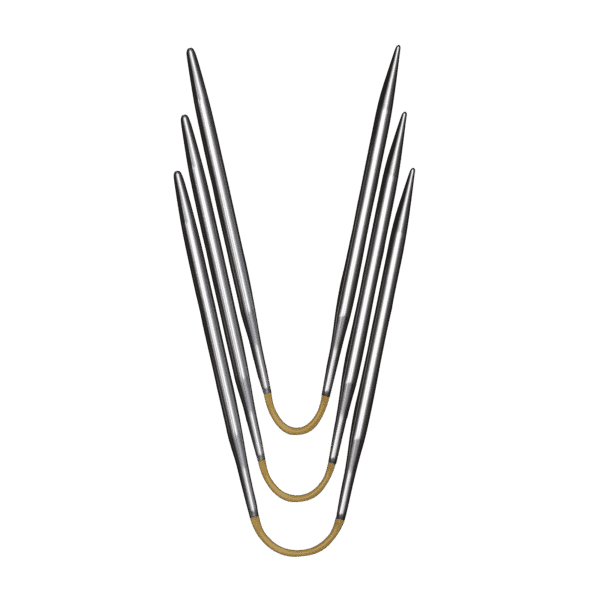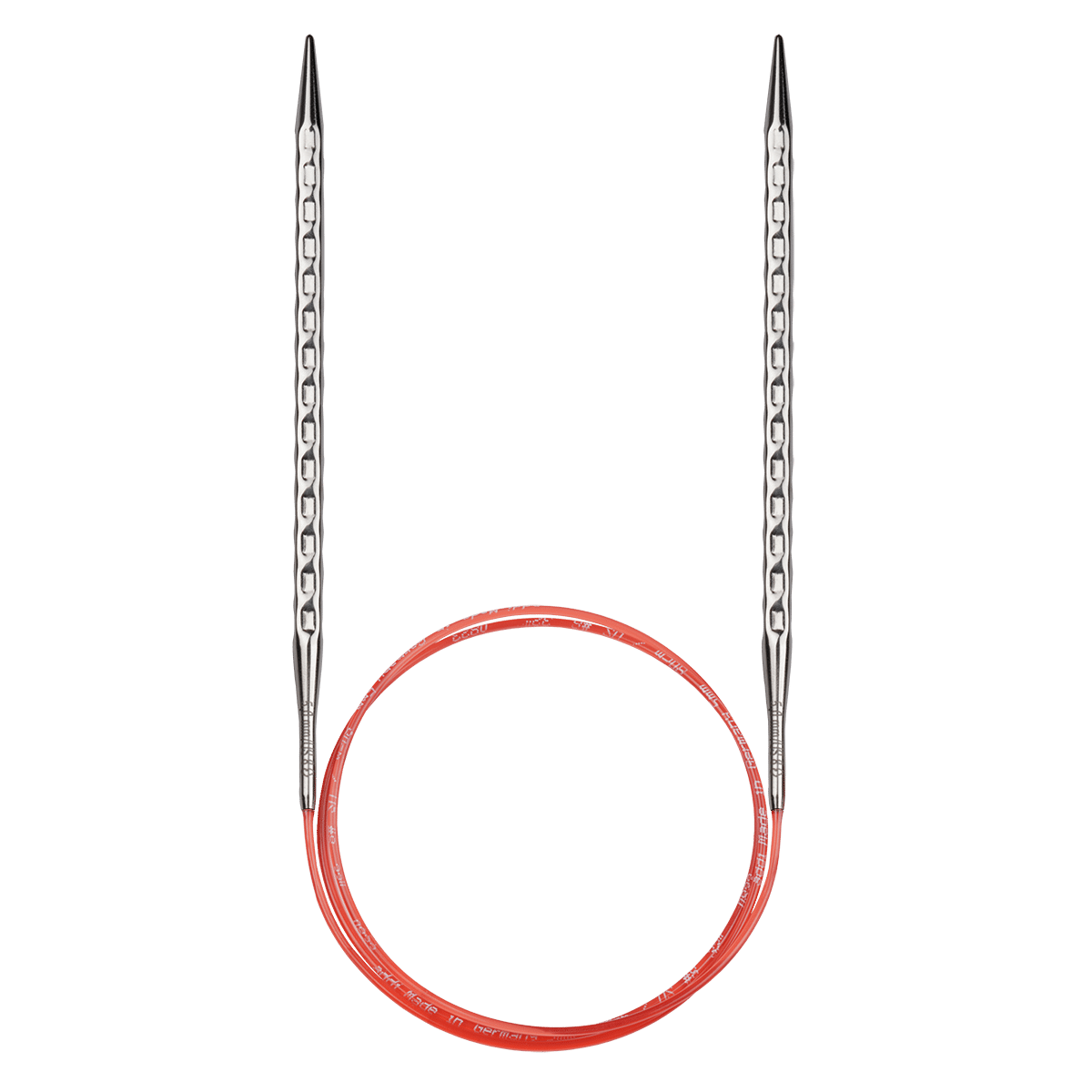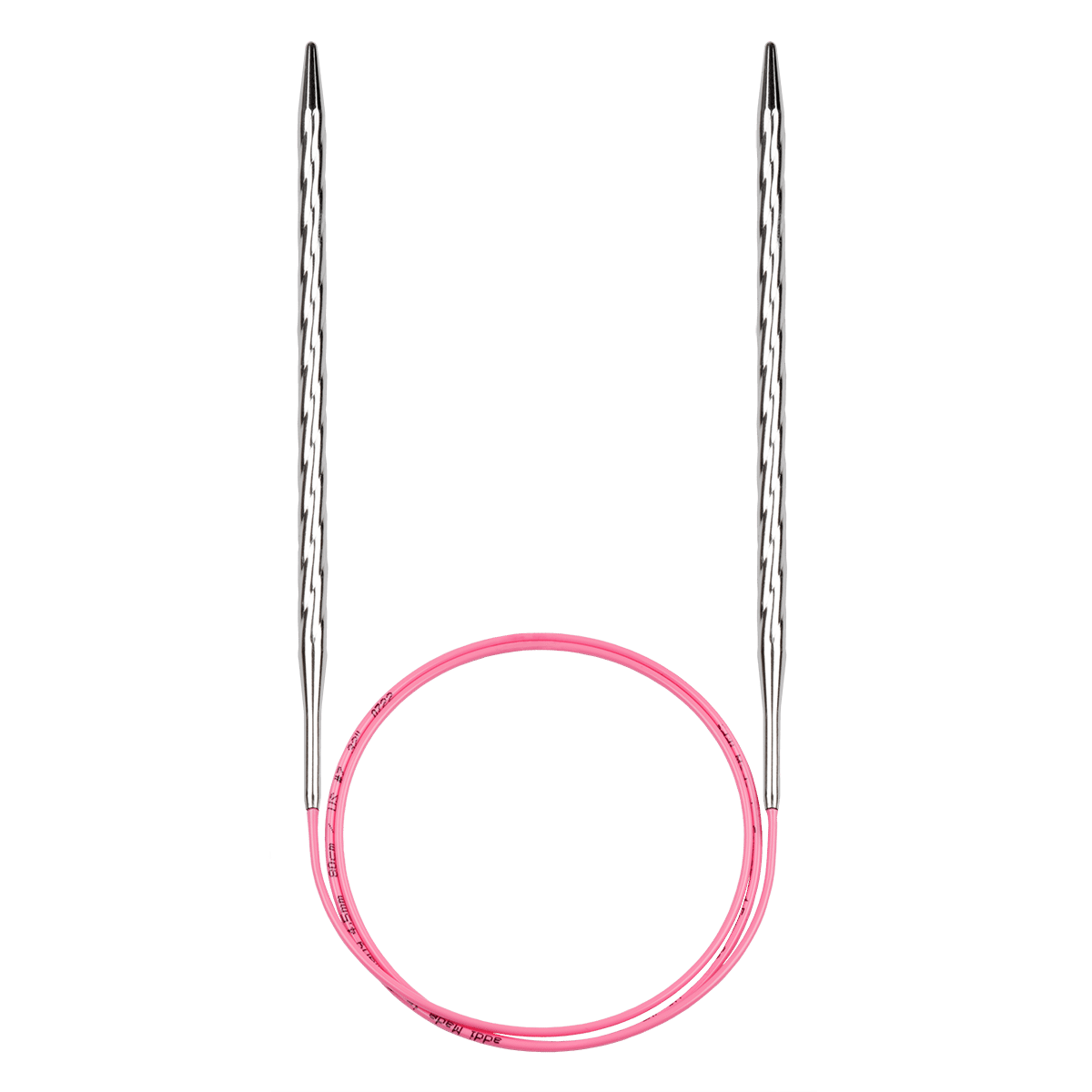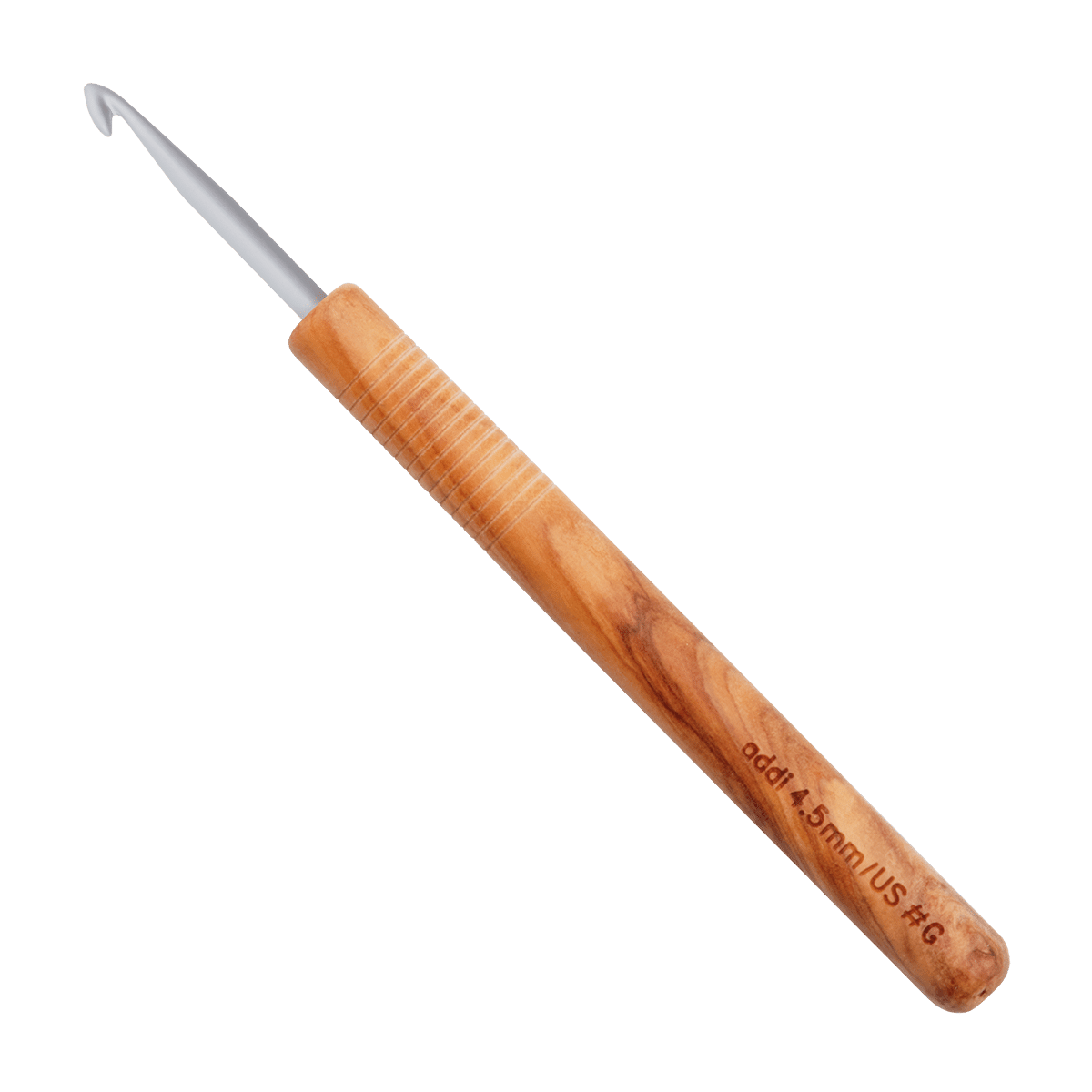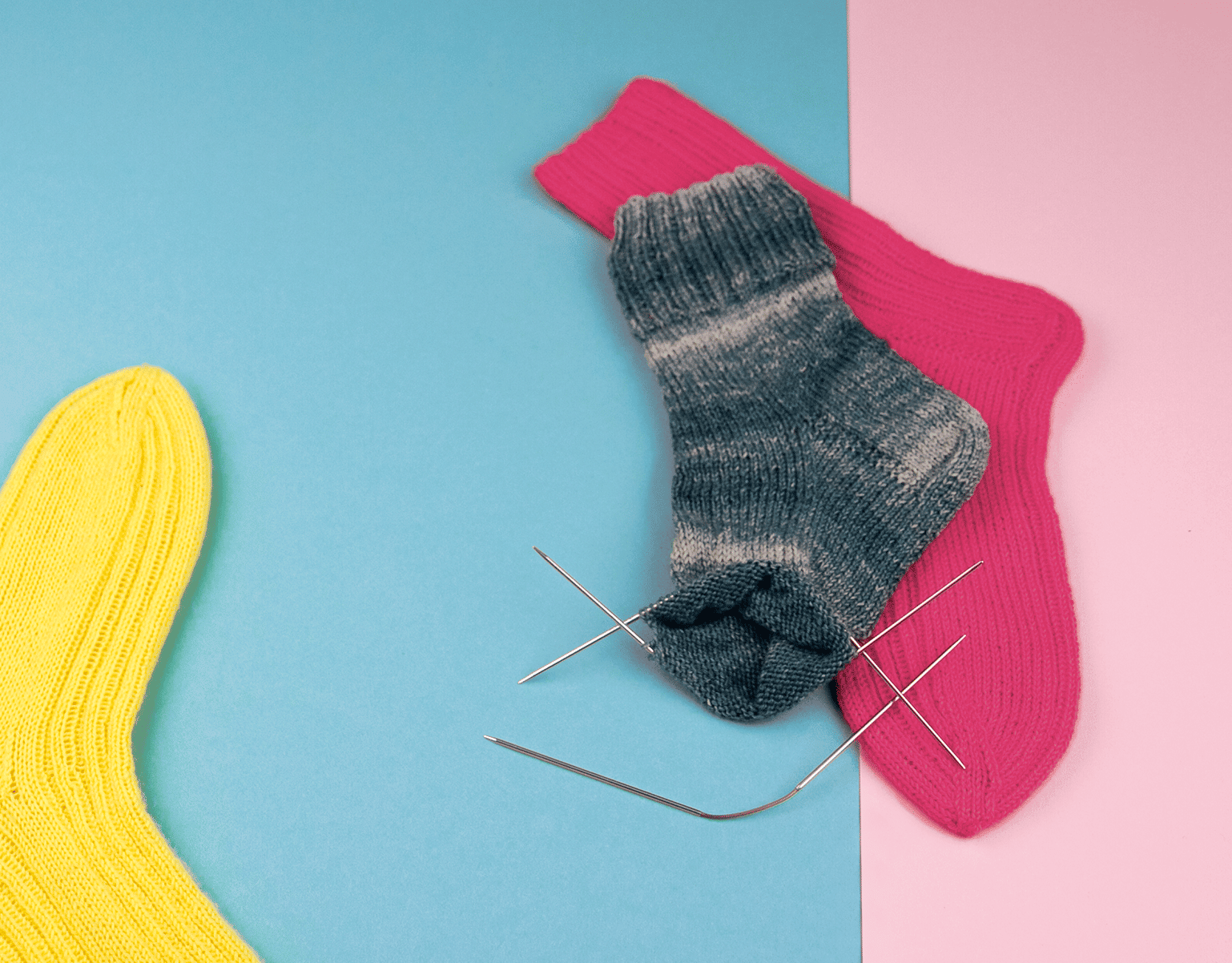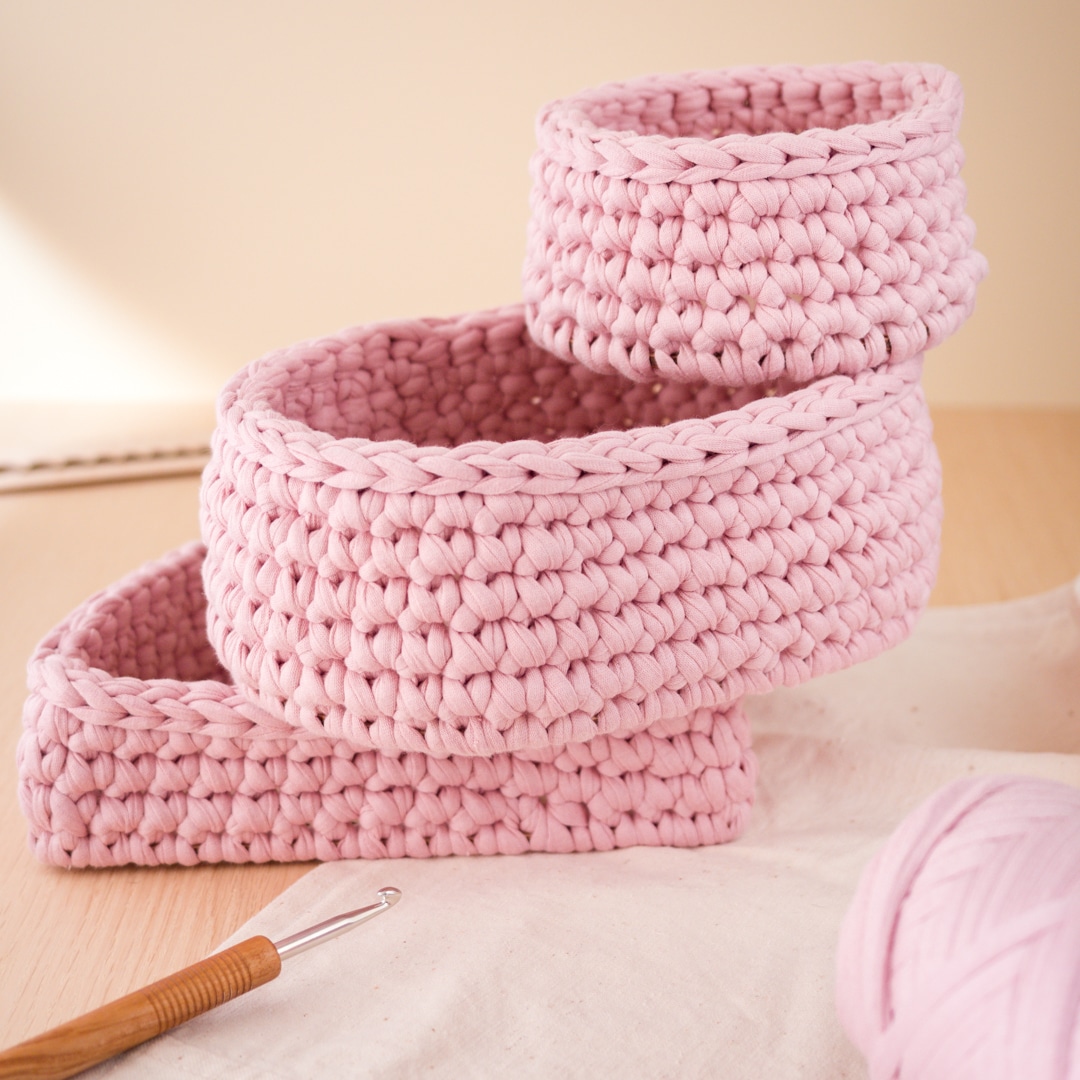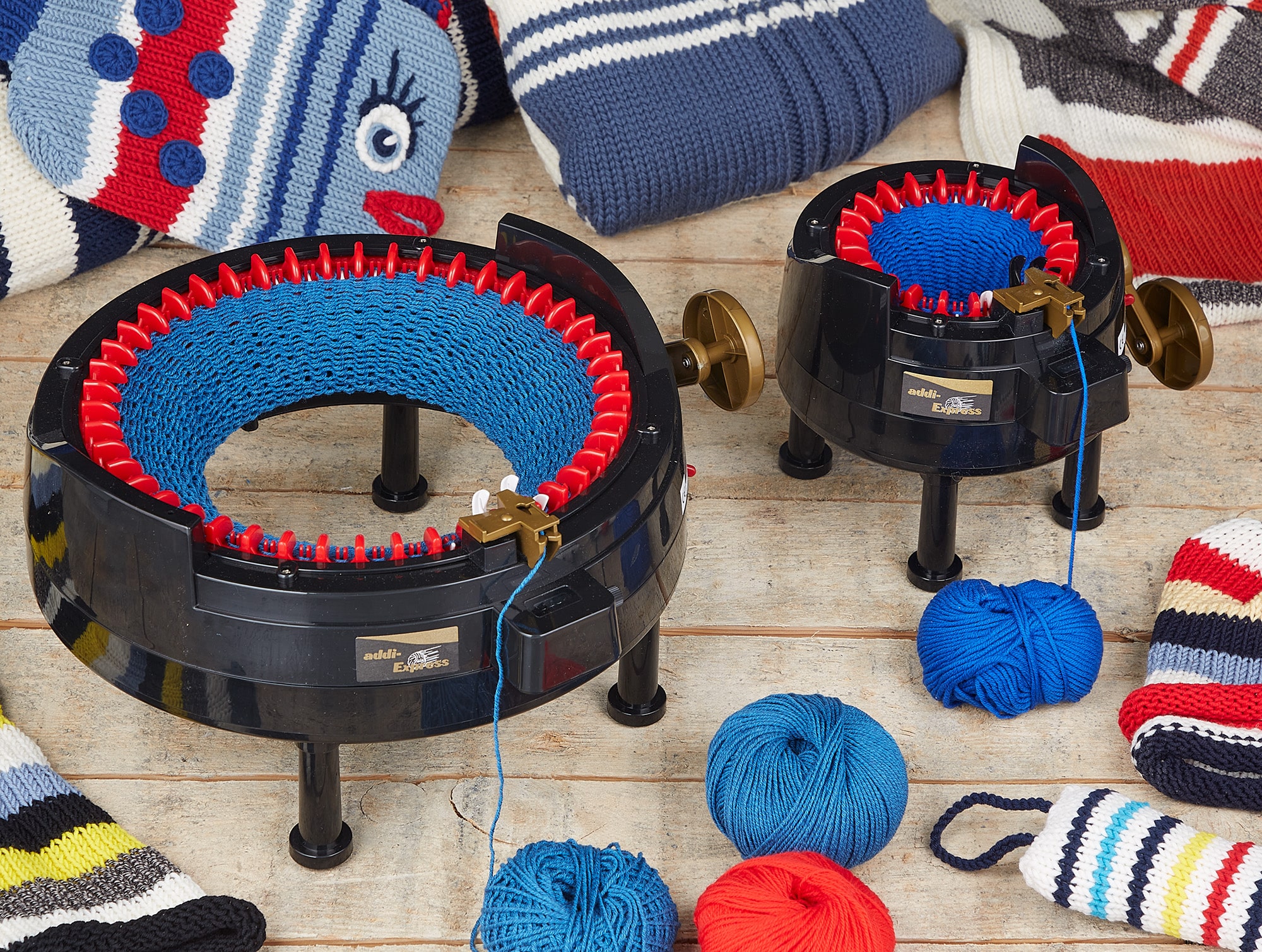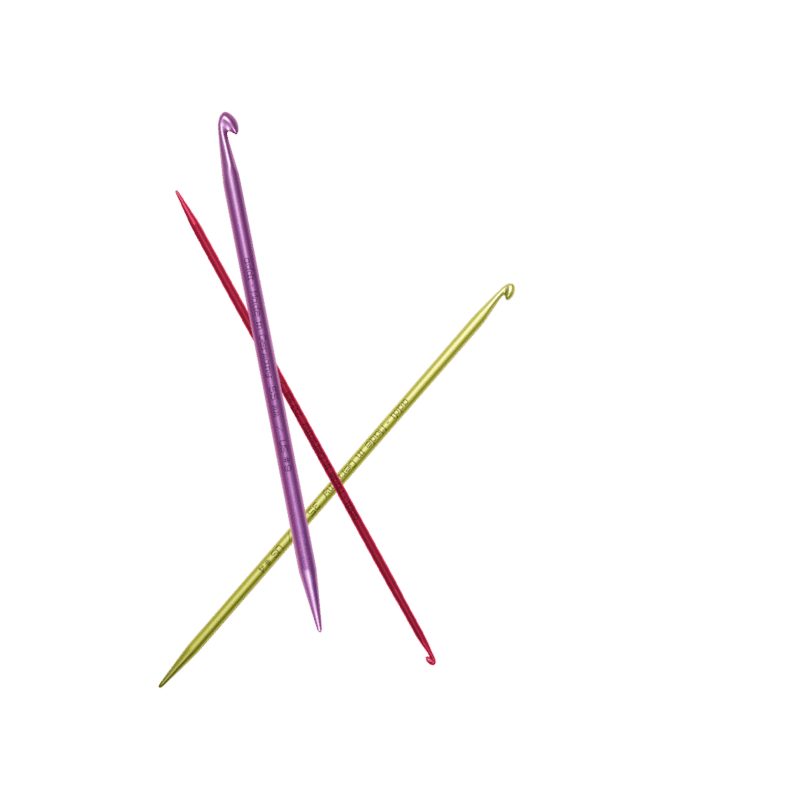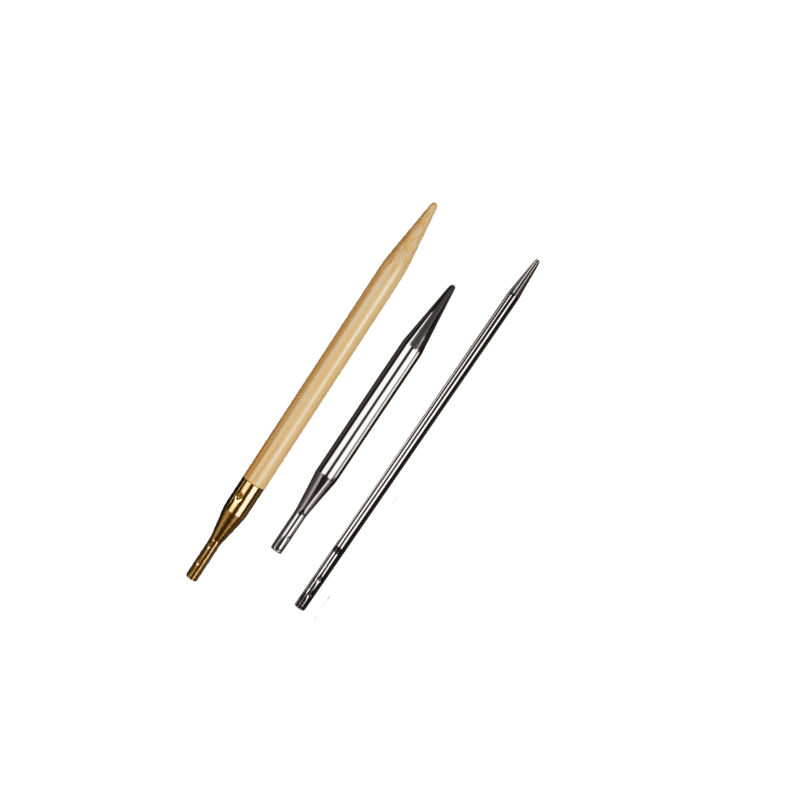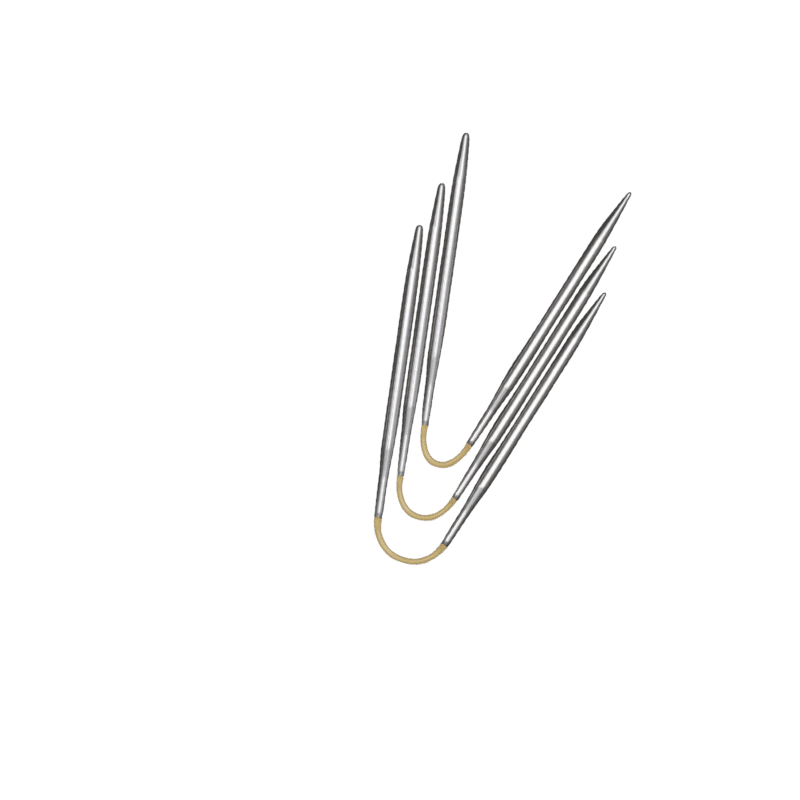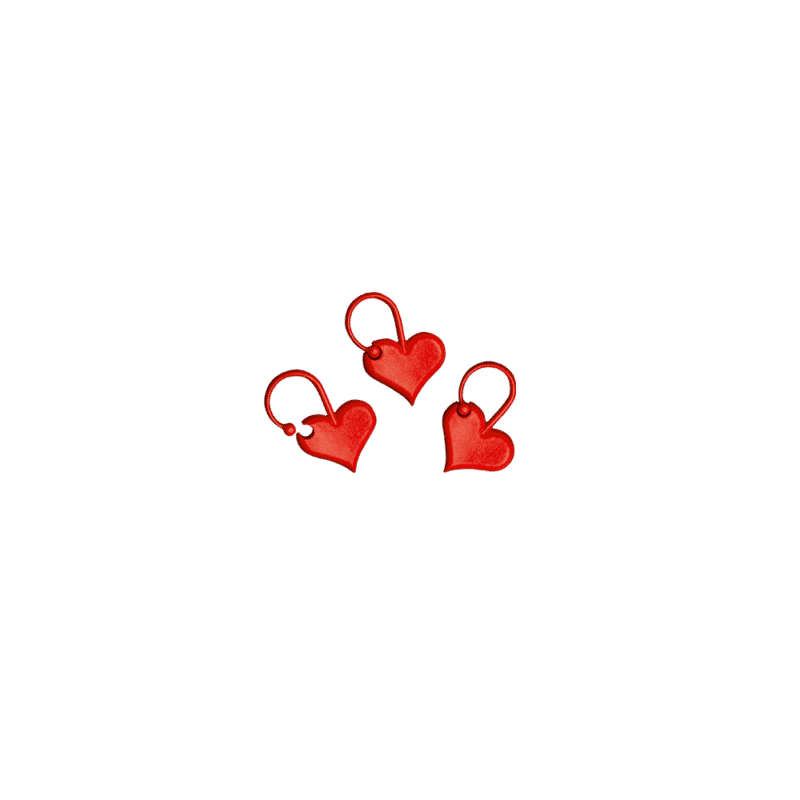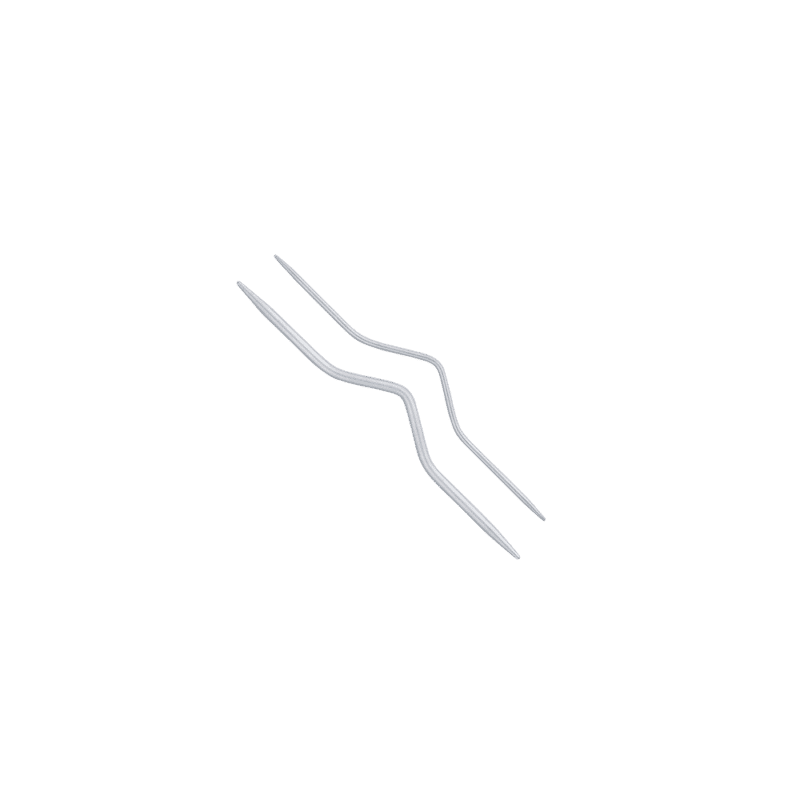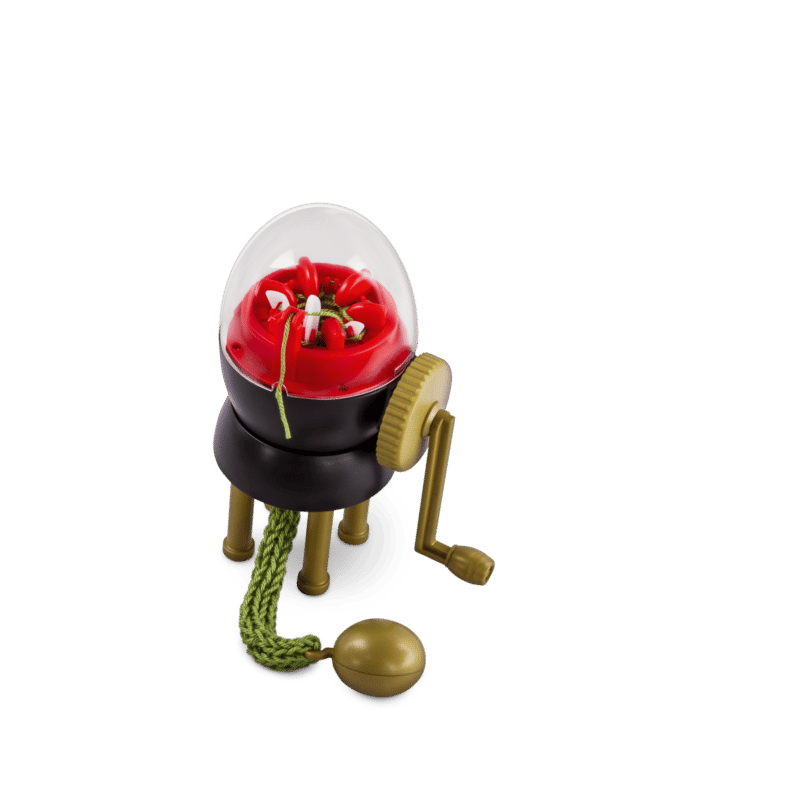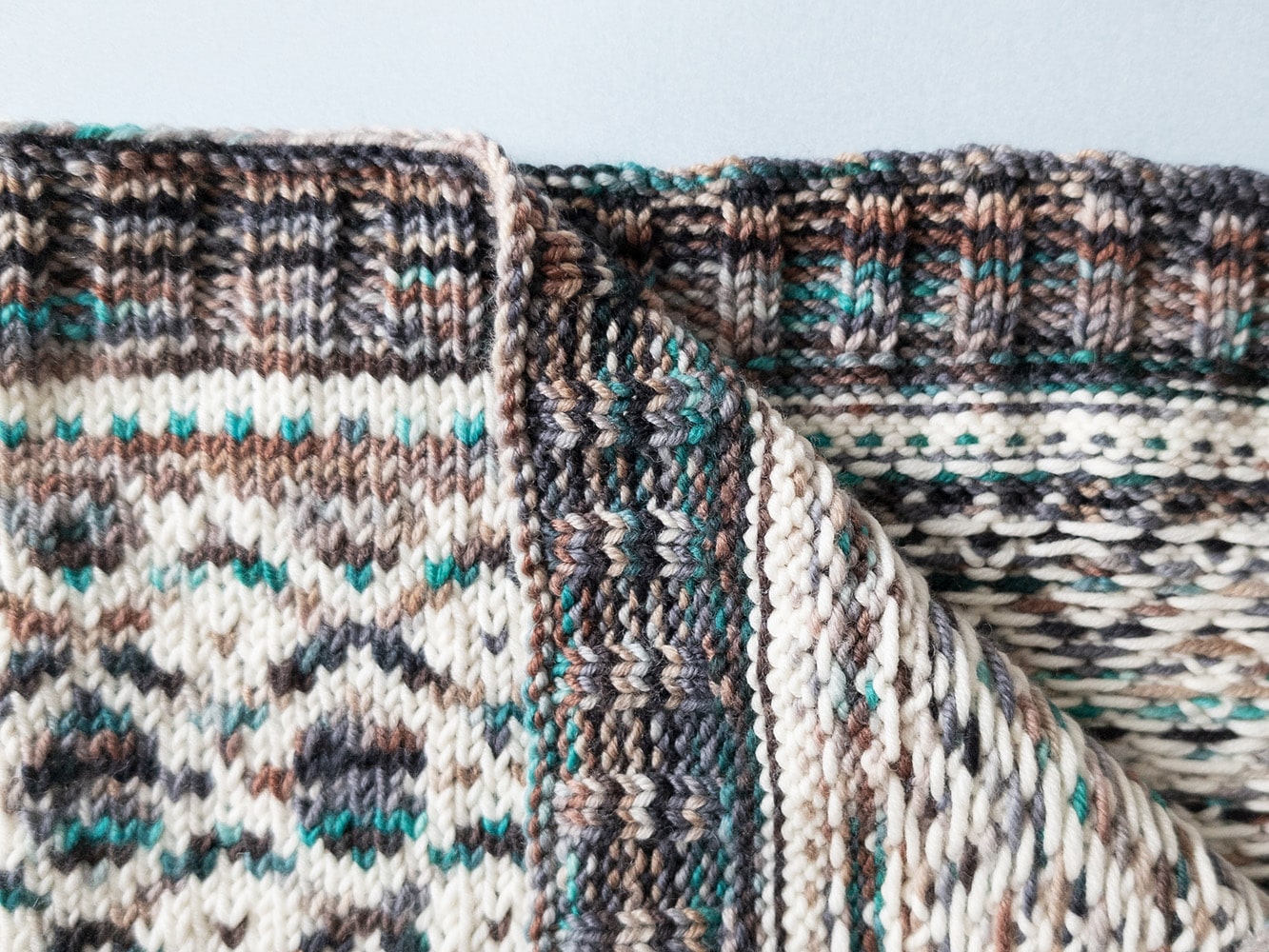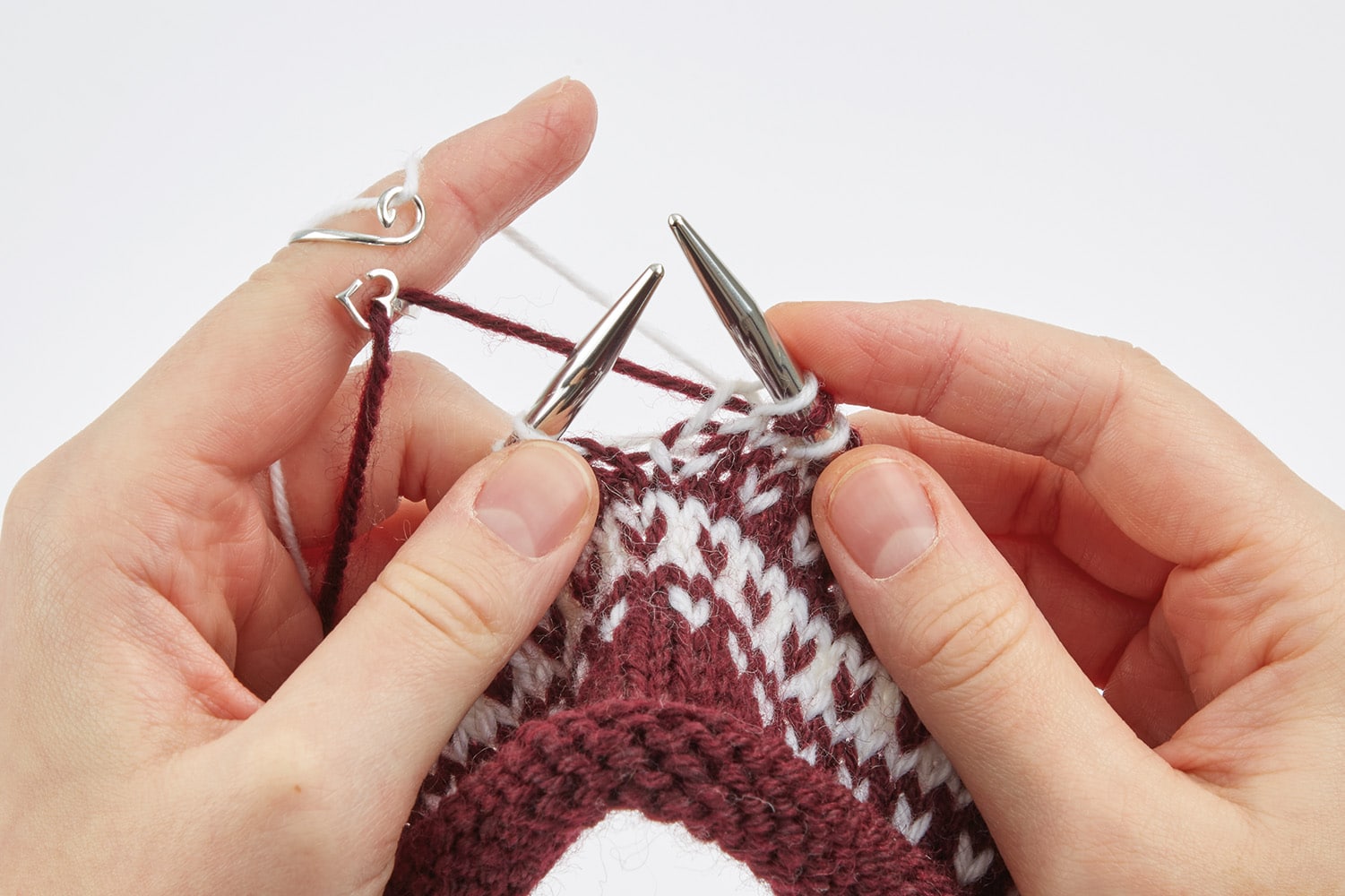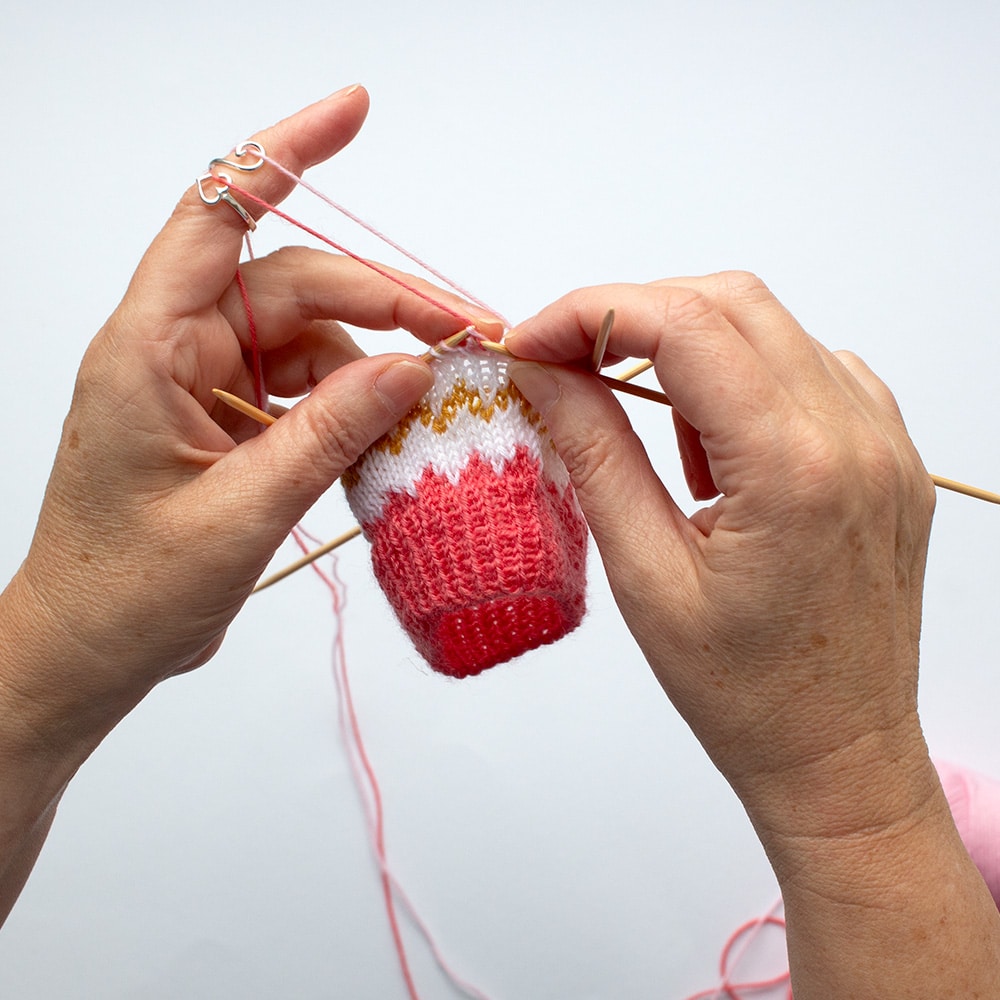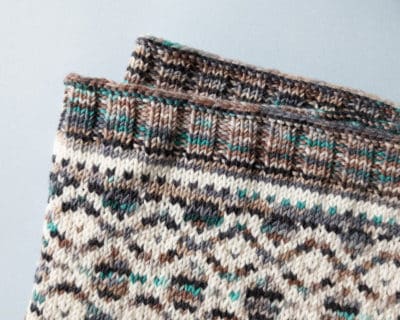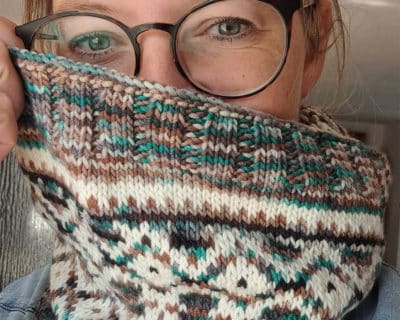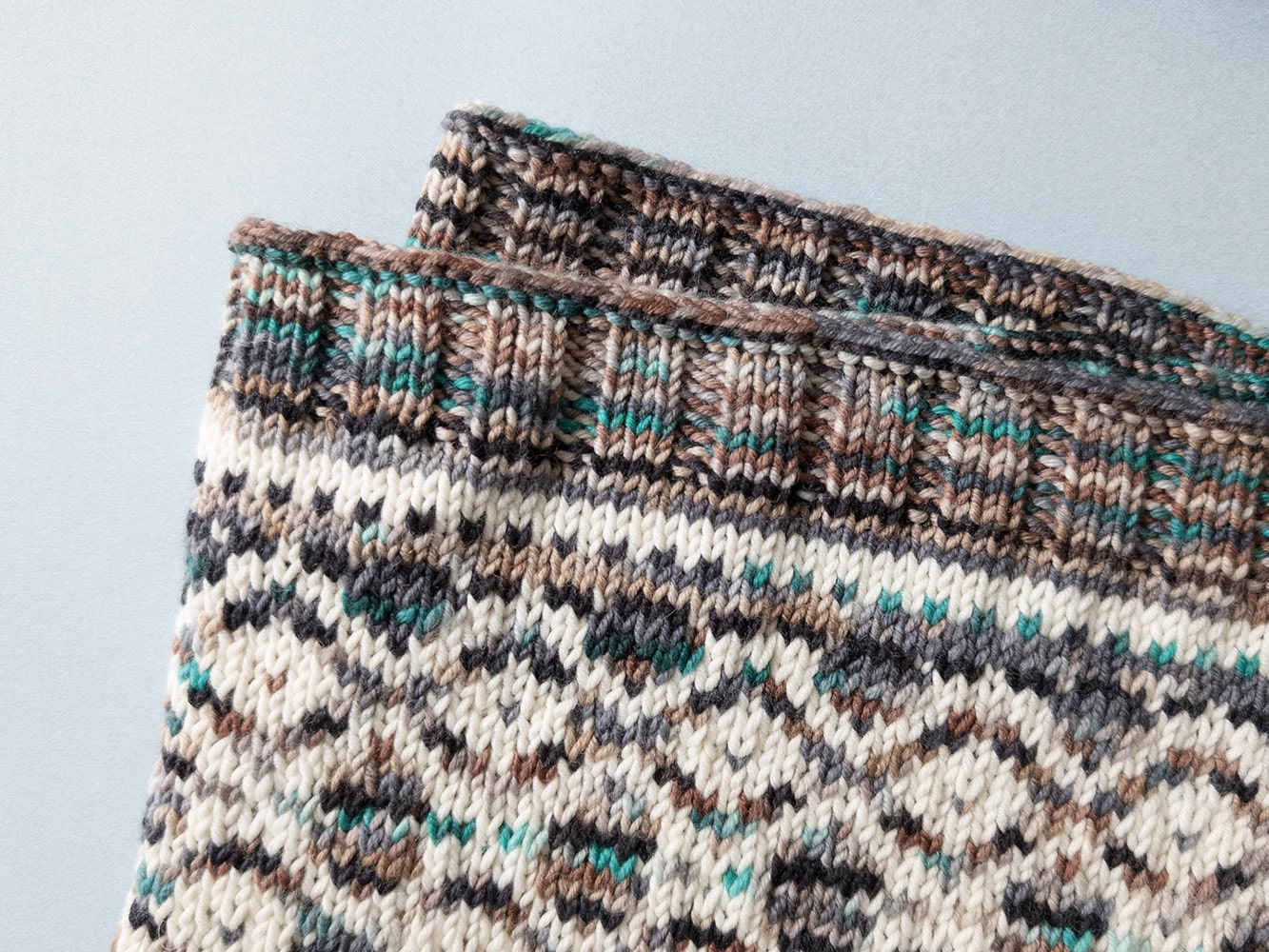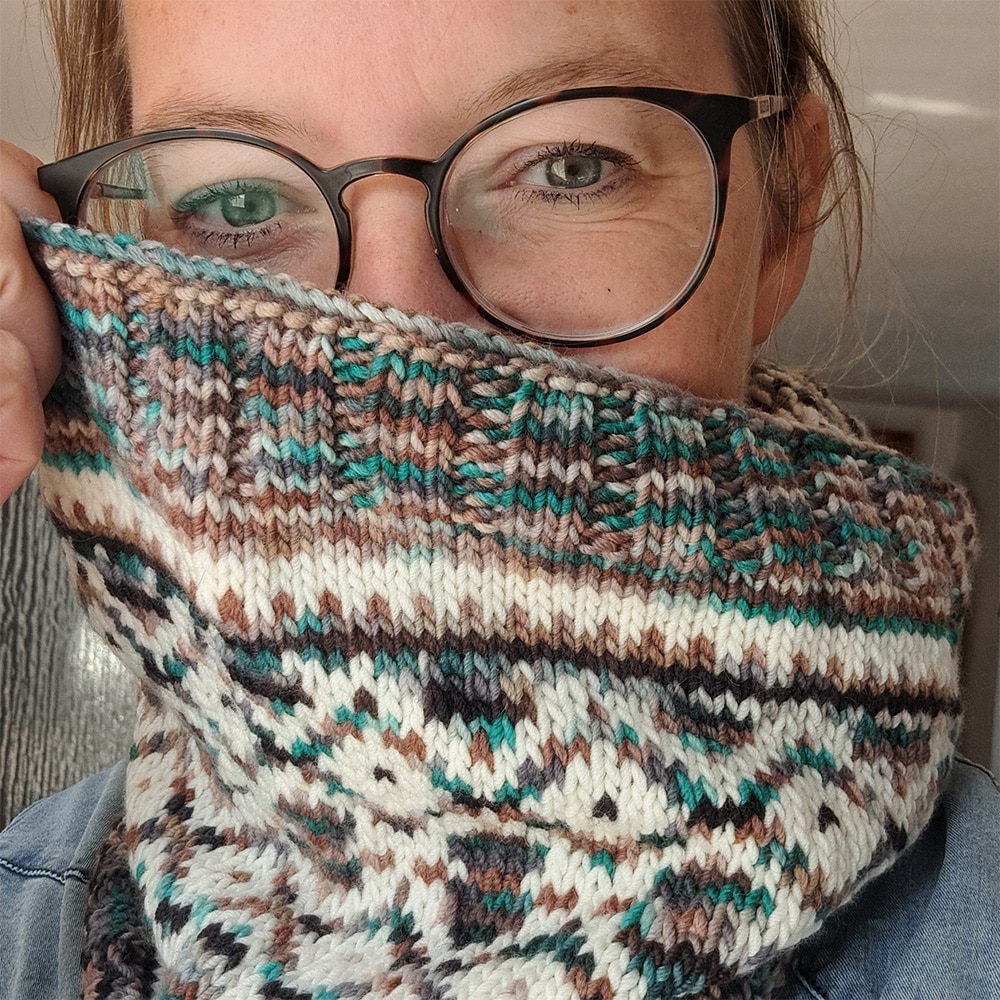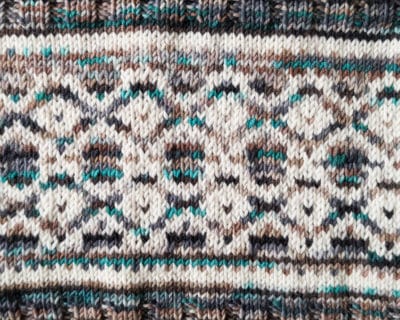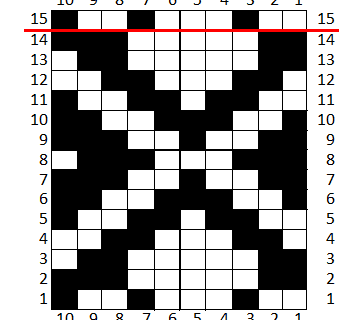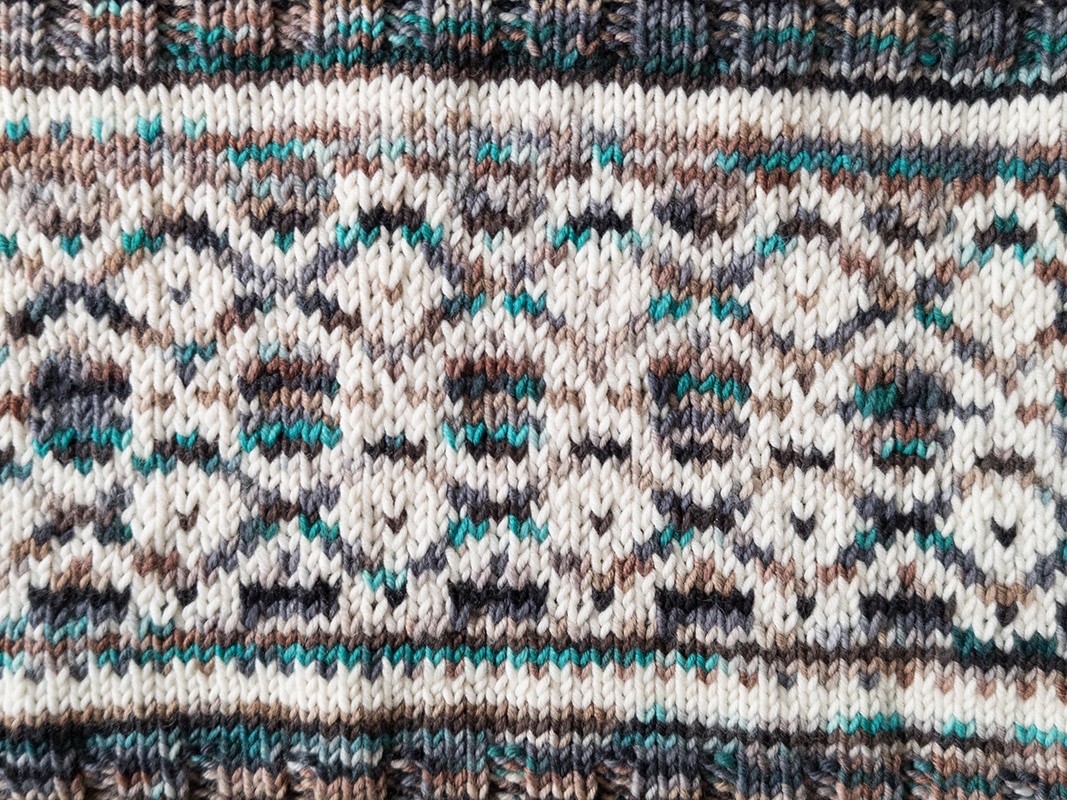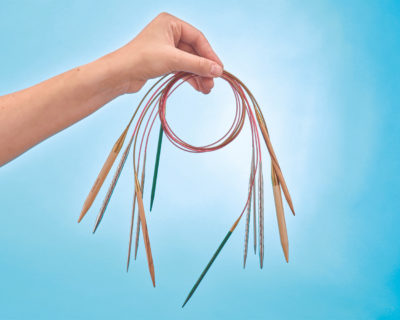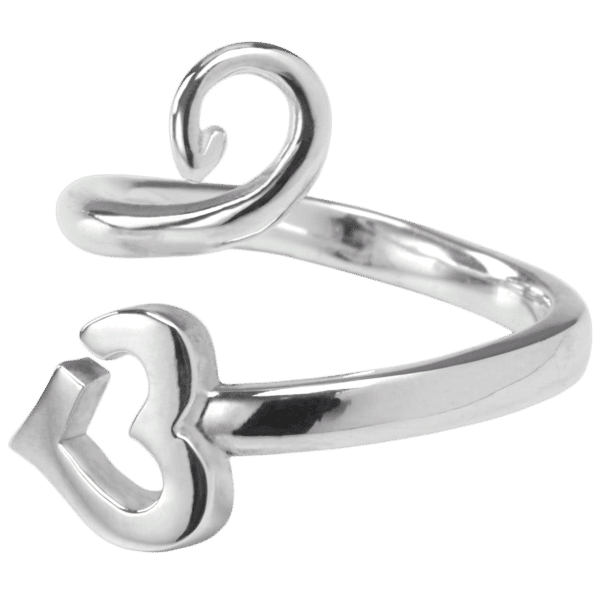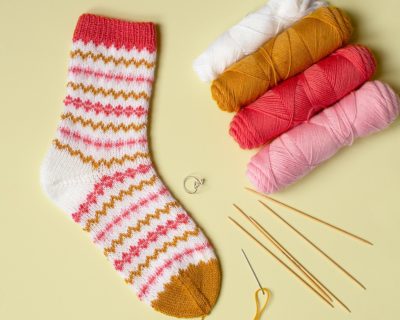Loop Cato – Loopschal mit Rundstricknadel stricken in Colourwork
Loop Cato is a cosy loop that is knitted using the colourwork technique (also known as ‘jacquard’ or ‘fair isle’). Worn twice around the neck, it keeps you nice and warm and also impresses with a great knitted-in pattern.
This loop not only suits our technical project manager Lukas - thanks to the many beautiful colour variations of the yarn, there is something for everyone here. Instructions by Alexstrickt.

- 150g „MOVE 8ply“ von Wool Addicts by Lang Yarns (150g / 300m) (= Farbe A)
- 70g „Merino+“ von Lang Yarns (50g/90m) (= Farbe B)
- addi circular 4 + 4,5 mm/ US 6 + 7
- stitch marker
- Darning needle
- Scissors
- Yarn ring if necessary
Gauge: 19 sts x 25 r = 4"/10cm (needle 4,5 mm/ US 6)
Size EU:
- Width x height: 21.5" x 9.8"/ 55cm x 25cm (flat)
- Circumference x height: 43.3" x 9.8"/ 110cm x 25cm
What is colourwork?
Colourwork pattern, also known as Jaquard pattern or Fair-Isle pattern, is a two-colour knitting pattern that is knitted with two threads that are knitted alternately according to the pattern.
One thread is knitted at a time (visible on the outside of the pattern). The other yarn runs on the inside and should be crossed with the knitted yarn on the back of the piece every 3-4 sts. You can find out how to do this here in the Video by Sylvie Rasch (german).
Tip: Knitting two-colour patterns is made easier, especially for beginners, by a Yarn ring like addi2You Handling is simplified because there is enough space between the two threads. If your thread tension is too loose, the threads can also be wrapped once around the ring eyelets.
A even thread tension of both threads is important to keep the pattern even and to prevent the knitted piece from becoming too tight on the inside due to too tight tension threads and no longer fitting.
Abbreviations
- sts = stitches
- r = round/ row
- RS = knit
- p = purl
- NS = needle size
- *…* = repeat the entry between the * until the end of the round
- rep = repeat
You should be able to:
- Knit and purl
- cast on and bind off
- Two-colour knitting
Knit a loop scarf: Cuff
Cast on 230 sts with needle 4 mm (US 6) and colour A and join in the round without twisting the stitches. Attach a round marker.
- Rd 1: knit
- Rd 2: purl
- Now knit 10 rounds in ribbed knitting *k3, p2*. (approx. 1.4"/ 3.5 cm)
Change to needle 4.5 mm (US 7).
- knit for 3 rounds
- change to colour B an knit 2 rounds
- knit one round alternate 1sts in colour A and 1sts in colour B
- knit two rounds in colour A
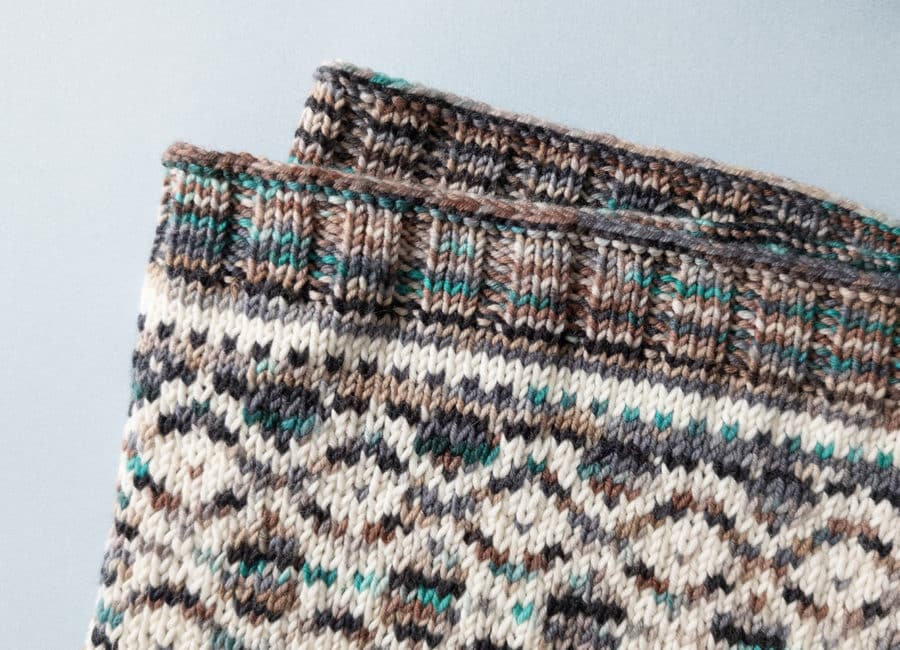
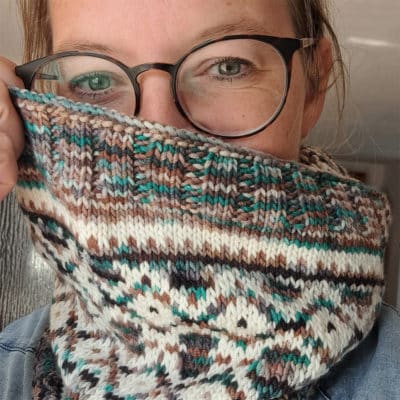
Knit a loop scarf: Cuff
Cast on 230 sts with needle 4 mm (US 6) and colour A and join in the round without twisting the stitches. Attach a round marker.
- Rd 1: knit
- Rd 2: purl
- Now knit 10 rounds in ribbed knitting *k3, p2*. (approx. 1.4"/ 3.5 cm)
Change to needle 4.5 mm (US 7).
- knit for 3 rounds
- change to colour B an knit 2 rounds
- knit one round alternate 1sts in colour A and 1sts in colour B
- knit two rounds in colour A
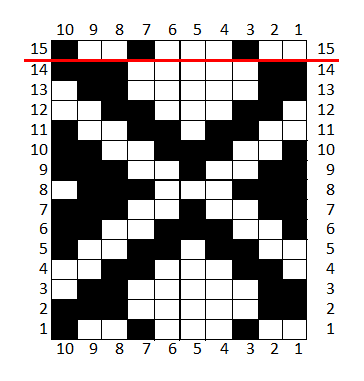
Knit colourwork pattern
From now on, you knit in the chart pattern, starting with r1 of the chart.
- You repeat the chart 23 times per round. For better orientation, you can place a stitch marker between each repetition.
Work the chart twice from R1 to R14.
Tip: The height of the loop can be adjusted with three sets of patterns by repeating R1 to R14. Please note that you will use more yarn.
- □ = colour A
- ■ = colour B
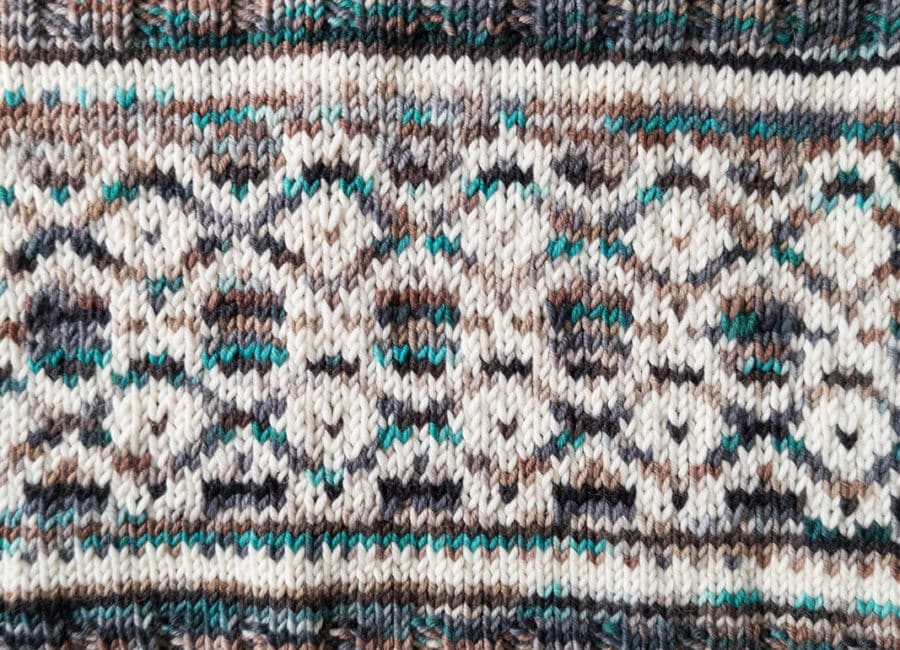
Knit colourwork pattern
From now on, you knit in the chart pattern, starting with r1 of the chart.
- You repeat the chart 23 times per round. For better orientation, you can place a stitch marker between each repetition.
Work the chart twice from R1 to R14.
Tip: The height of the loop can be adjusted with three sets of patterns by repeating R1 to R14. Please note that you will use more yarn.
- □ = colour A
- ■ = colour B
Knit end cuff
- Finish by knitting r15.
- knit two rounds in colour A
- knit one round alternate 1sts in colour A and 1sts in colour B
- Change to colour B and knit 2 rounds. Cut the yarn from colour B, it is no longer needed.
- knit 3 round with colour A
Change to needle 4 mm (US 6).
- knit 10 rounds in ribbed knitting *k3, p2*
- purl one round
Bind off loose.
Tip: If you usually bind off rather tightly, you can also use a larger needle size. Cut and sew the thread.
Wash, stretch, done.
Share your progress with us:
Strickst du gerade an deinem Loop Cato? Teile das Ergebnis gerne auf Instagram unter #loopylvie @alexstrickt @addi_by_selter
or in our Facebook group "addi Friends”
Design + Photos: Alexstrickt
Colourwork knitting tips:
Thread tension
- When knitting colourwork, it is important that you do not knit too tightly and that you keep the back threads loose behind the work.
- This is particularly important if you are knitting a lot of stitches in a row in one colour. You can also pull the tension thread a little loose with your fingers.
For festive knitters
- If you knit too tightly, it is best to use a larger needle size for the colourwork part.
Thread position
- It is important for the correct thread position that you have the main colour at the back of the finger and the contrasting colour at the front of the finger. This gives the back threads more length (see photos).
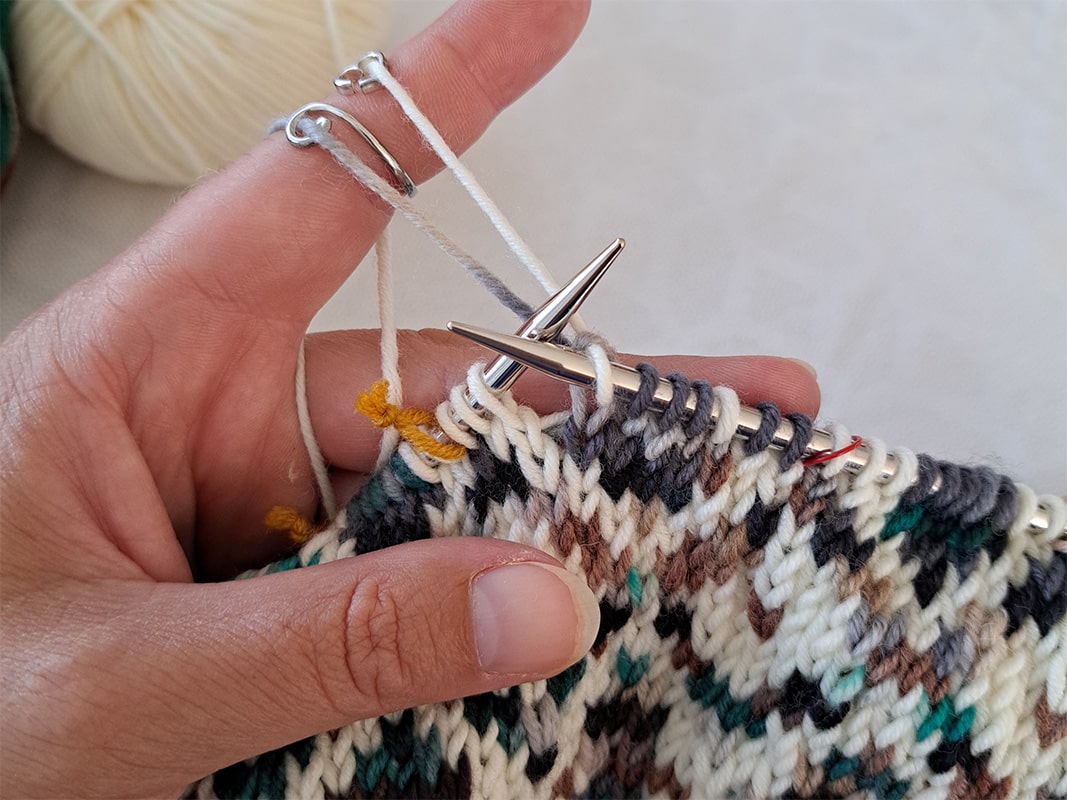
Crossing threads
- If you knit more than 4 stitches in one colour, you should cross the yarn once in the background so that you don't get caught on the long yarns when tightening the loop.
- To do this, pull the yarn under the yarn of the other colour while knitting, thereby crossing the yarns.
There are also more tips and knitting patterns in the book:
Skandi Strickmuster – Die Sammlung.
Published by EMF-Verlag 10/2024, authors: Inga Mallwitz, Alexandra Sakota
Möchtest du diese Anleitung lieber ausdrucken? Eine PDF Version gibt es bei Designerin Alexstrickt bei Ravlery zu kaufen.
